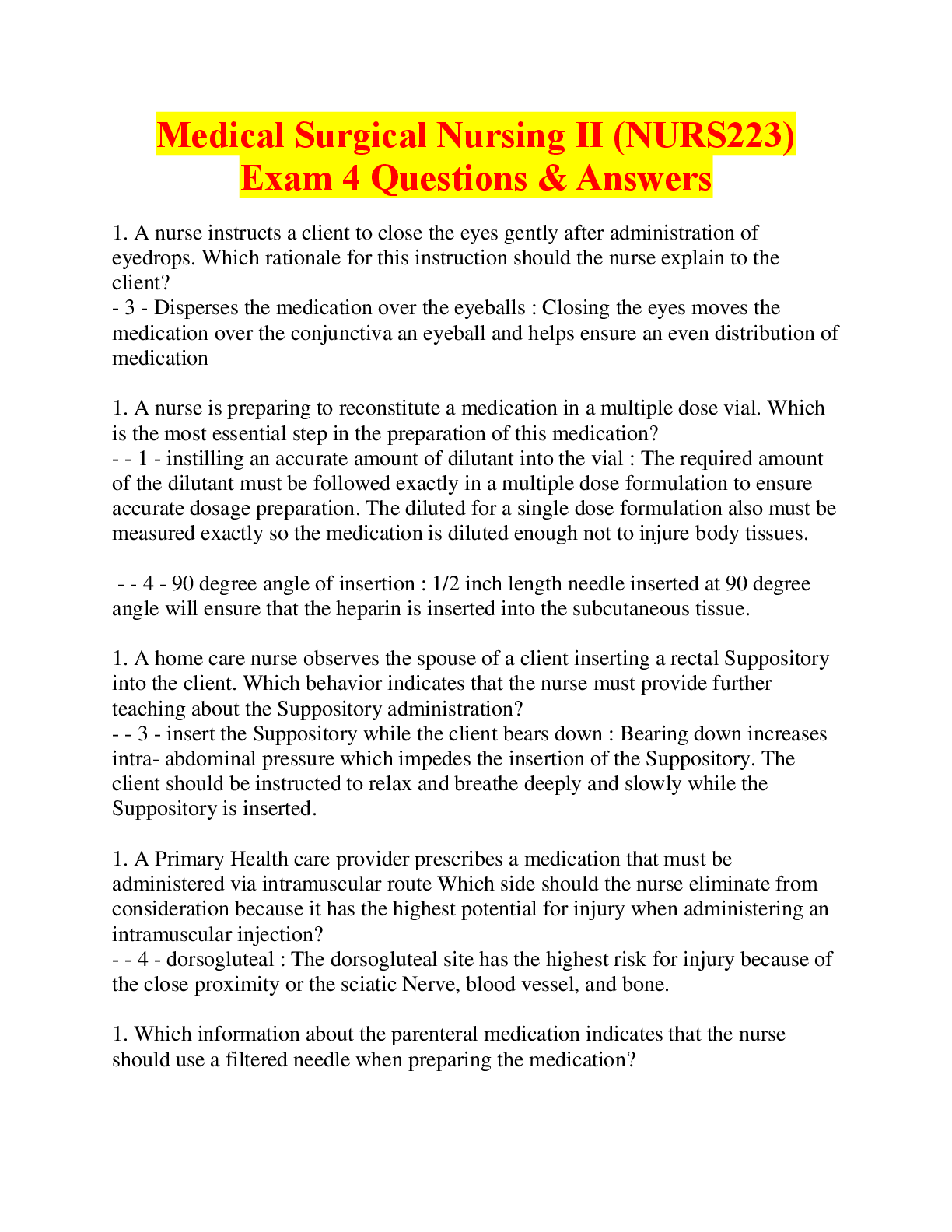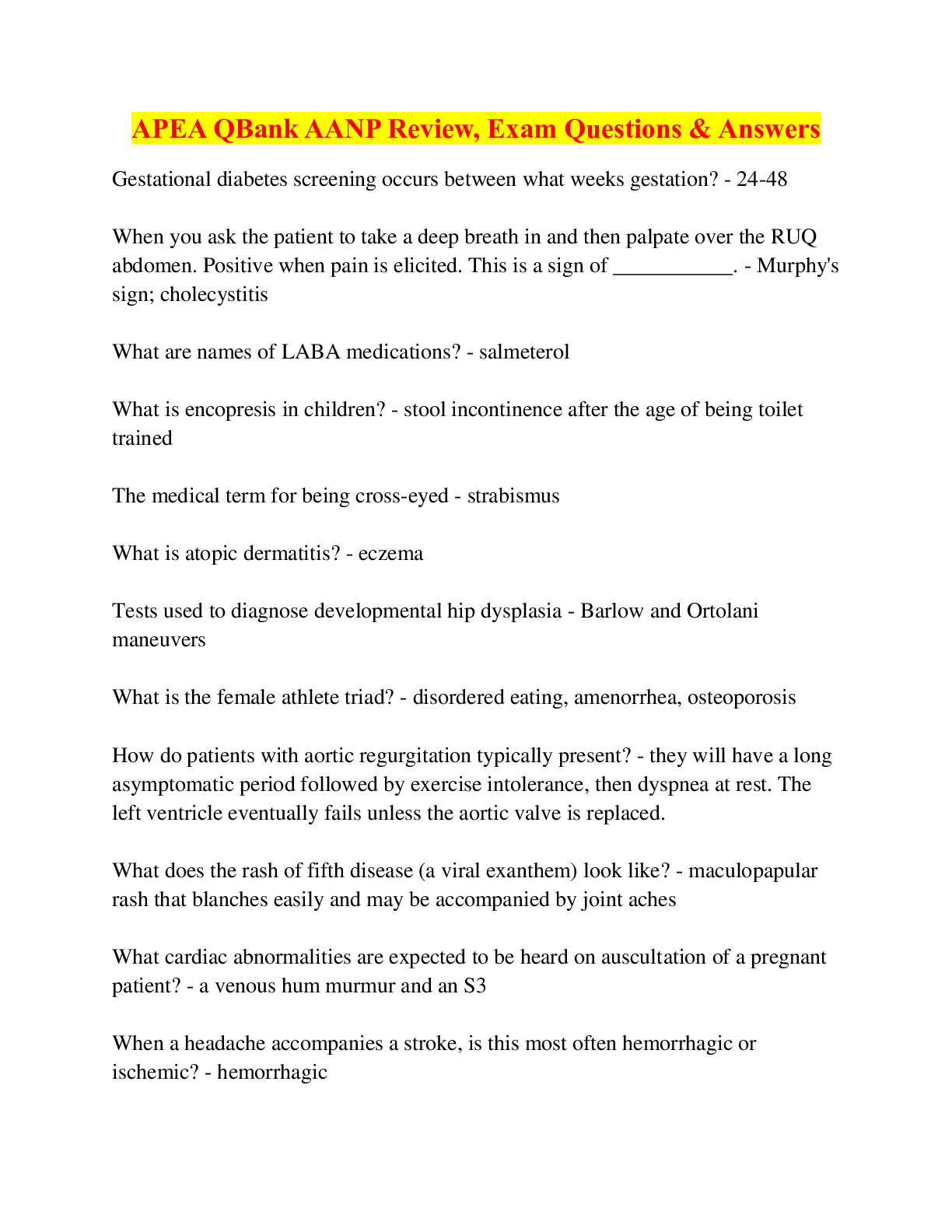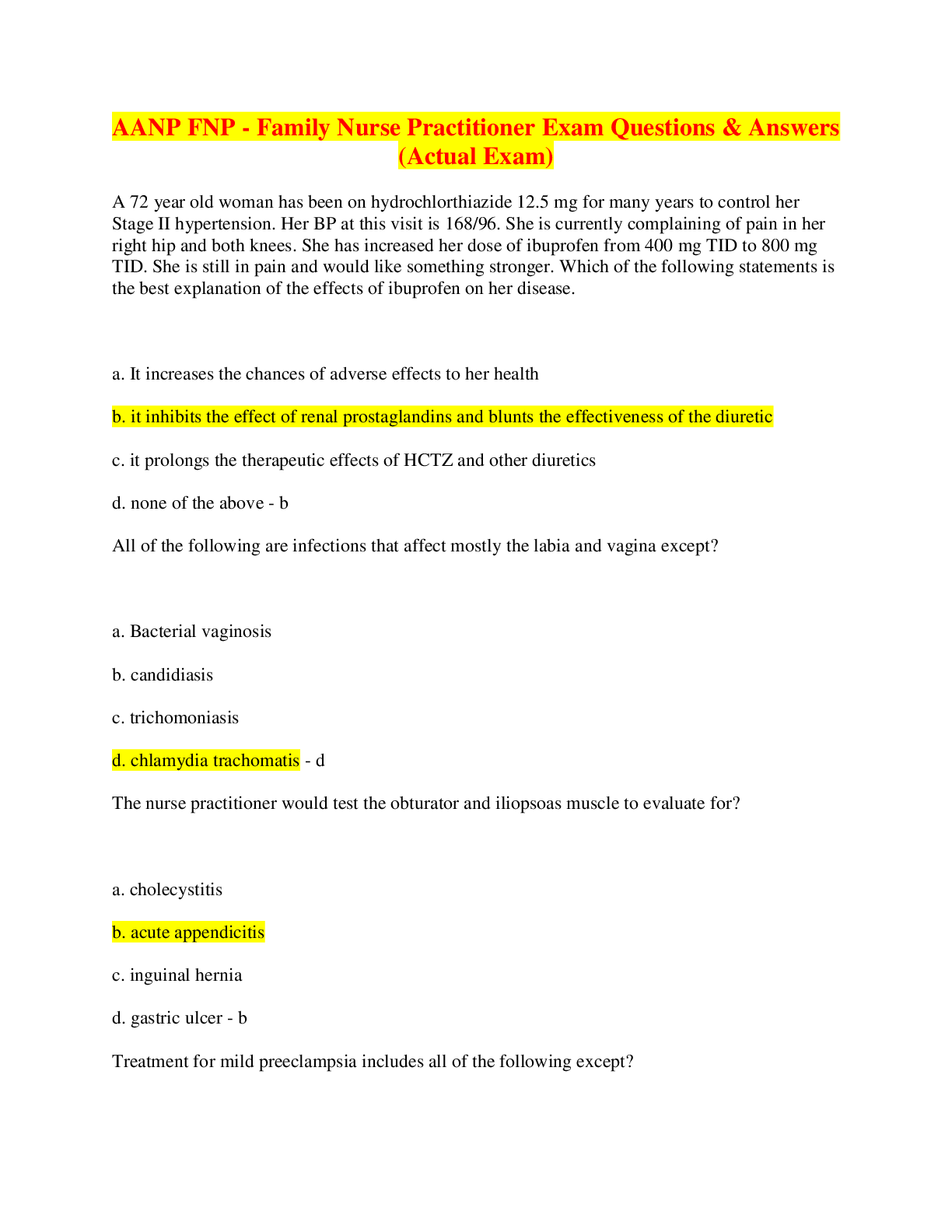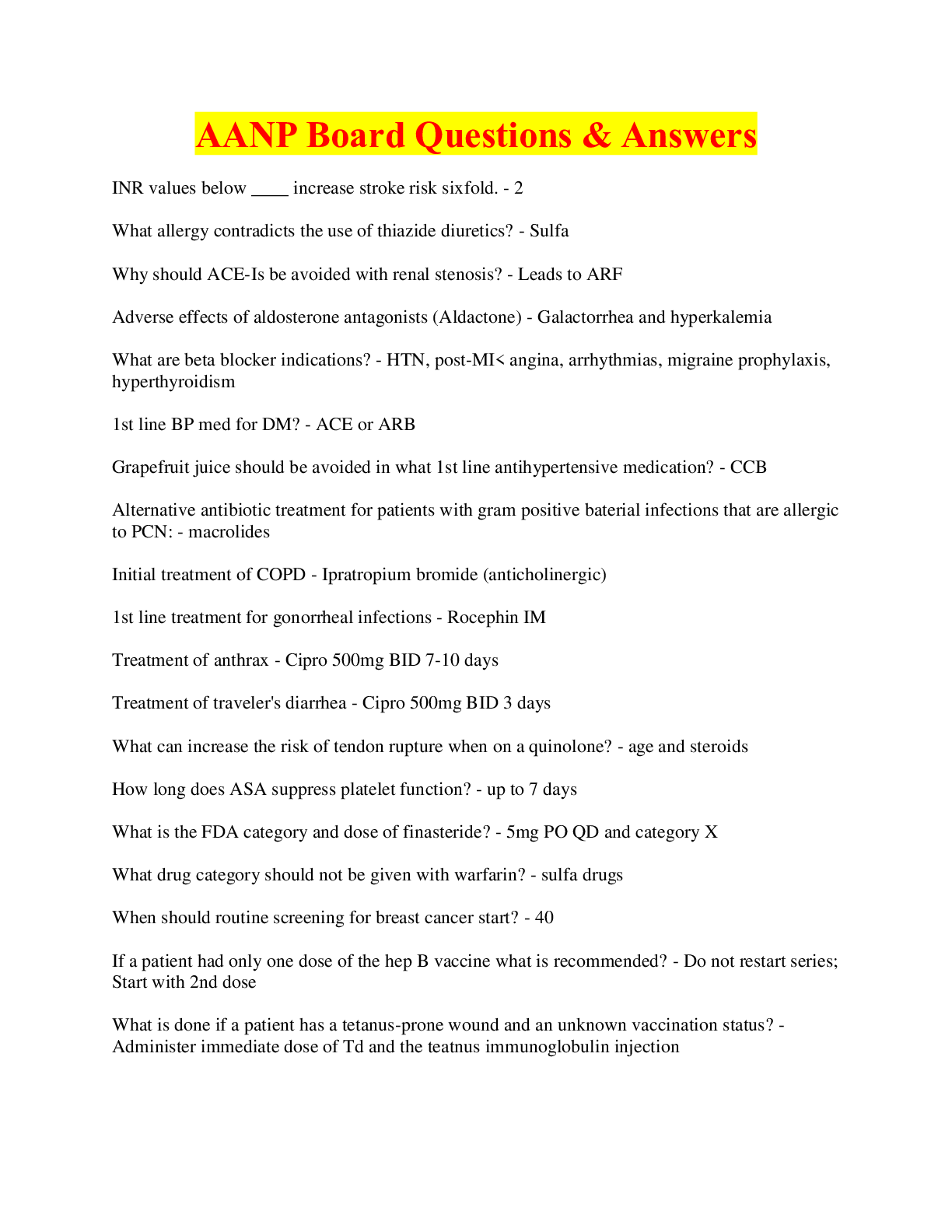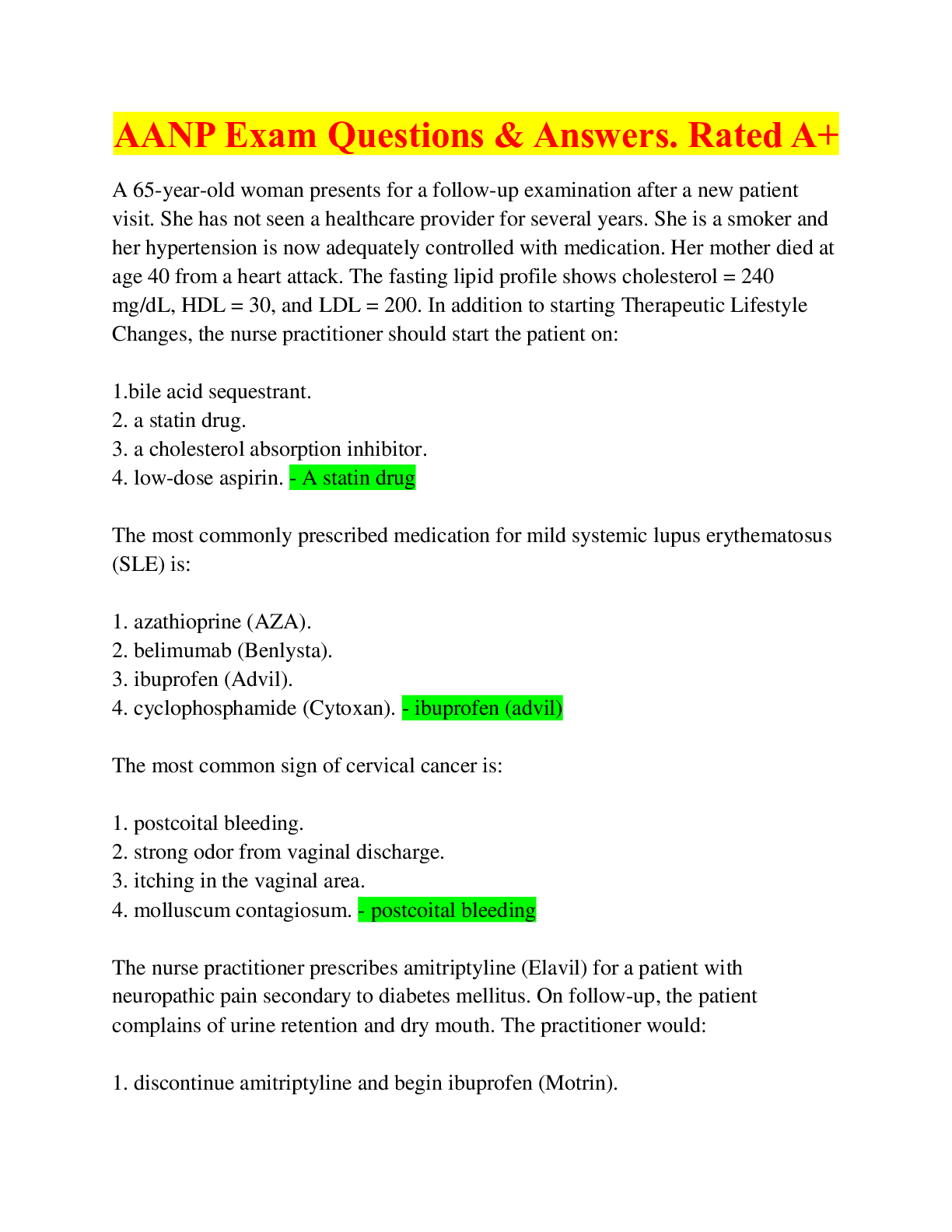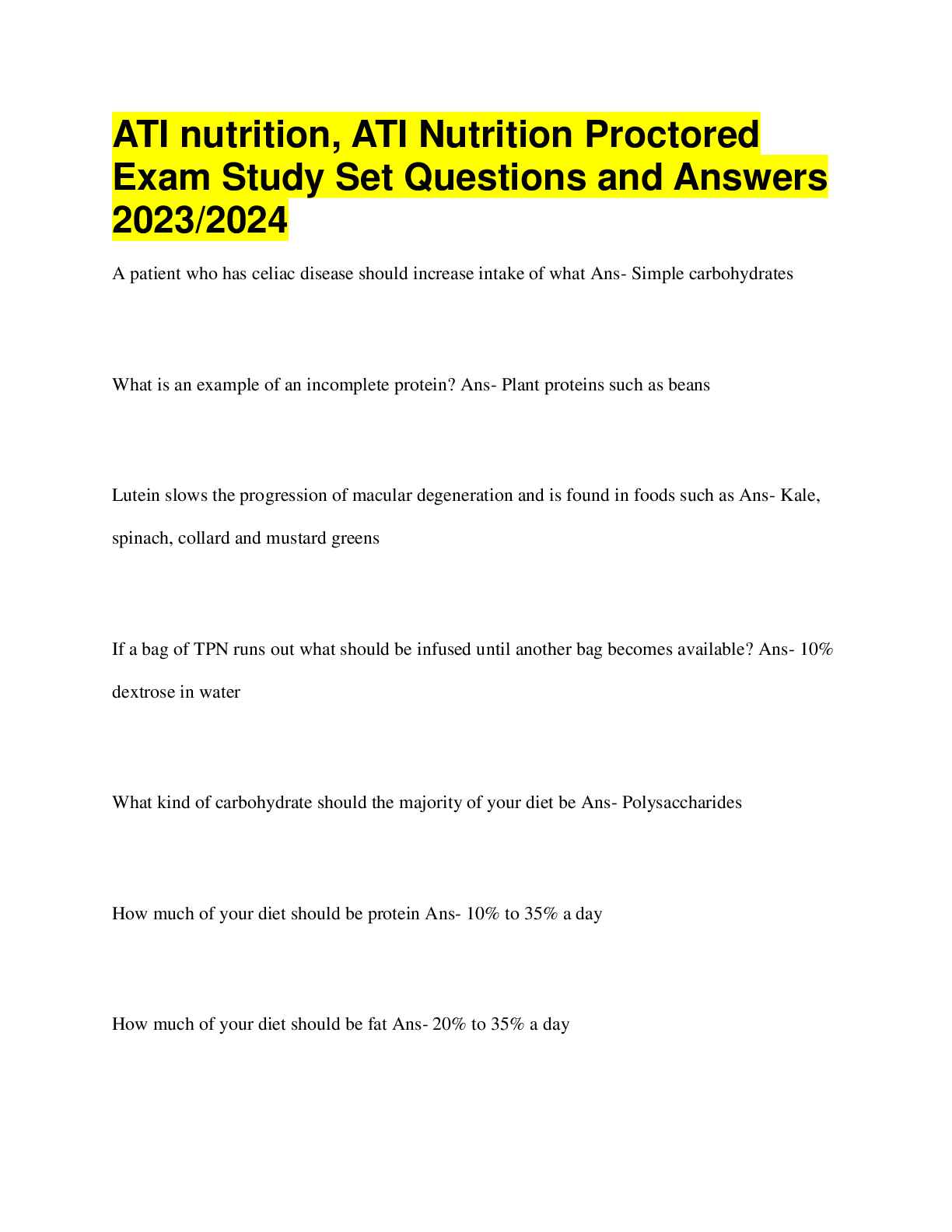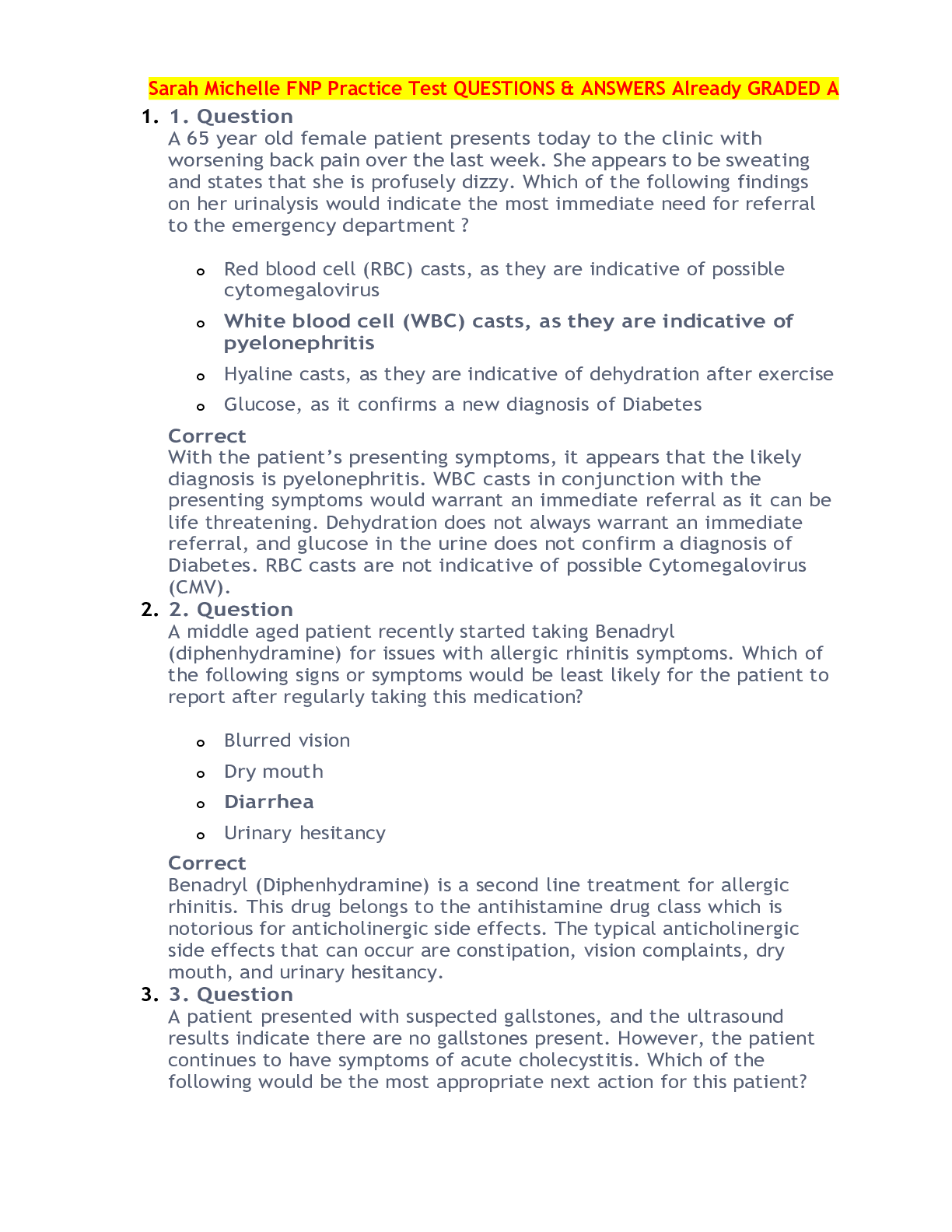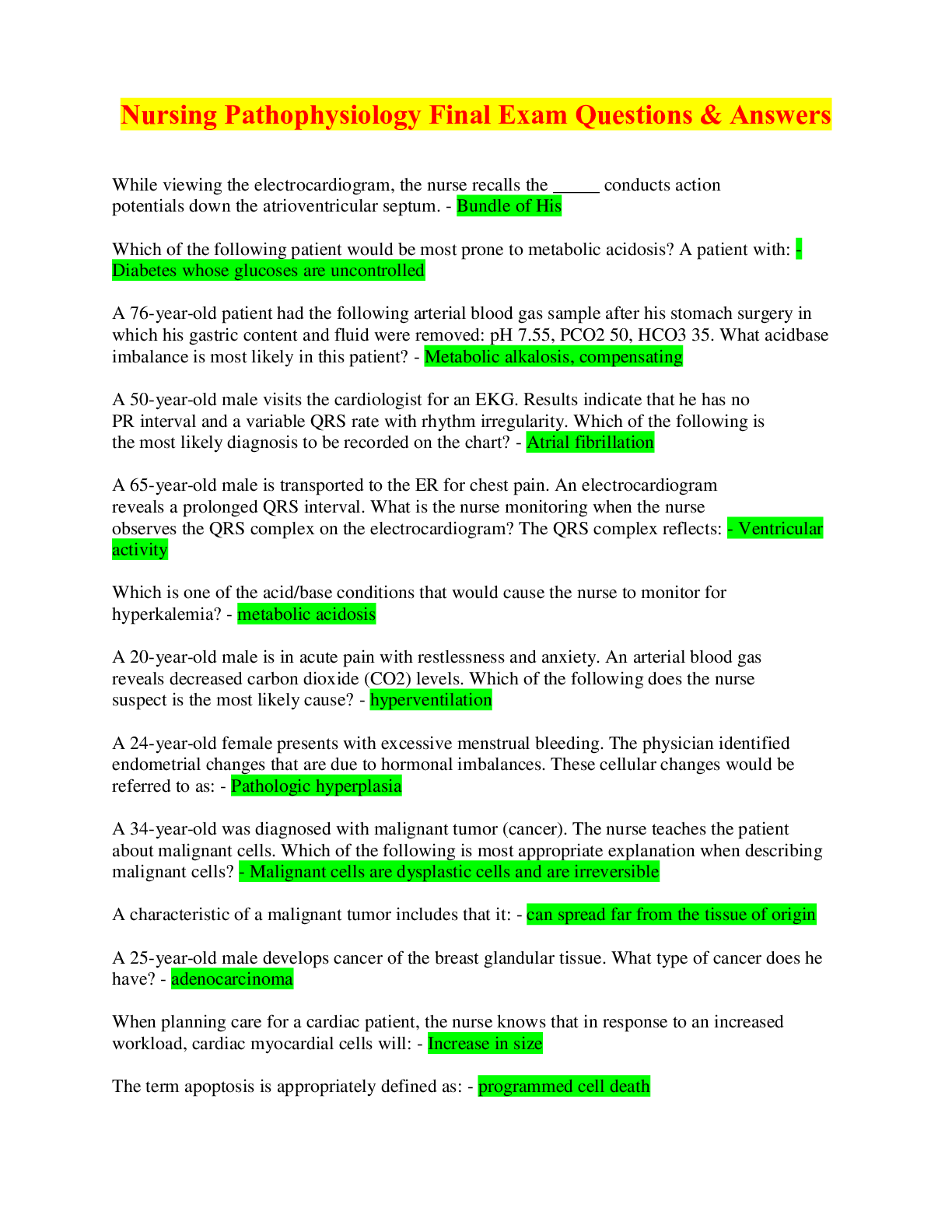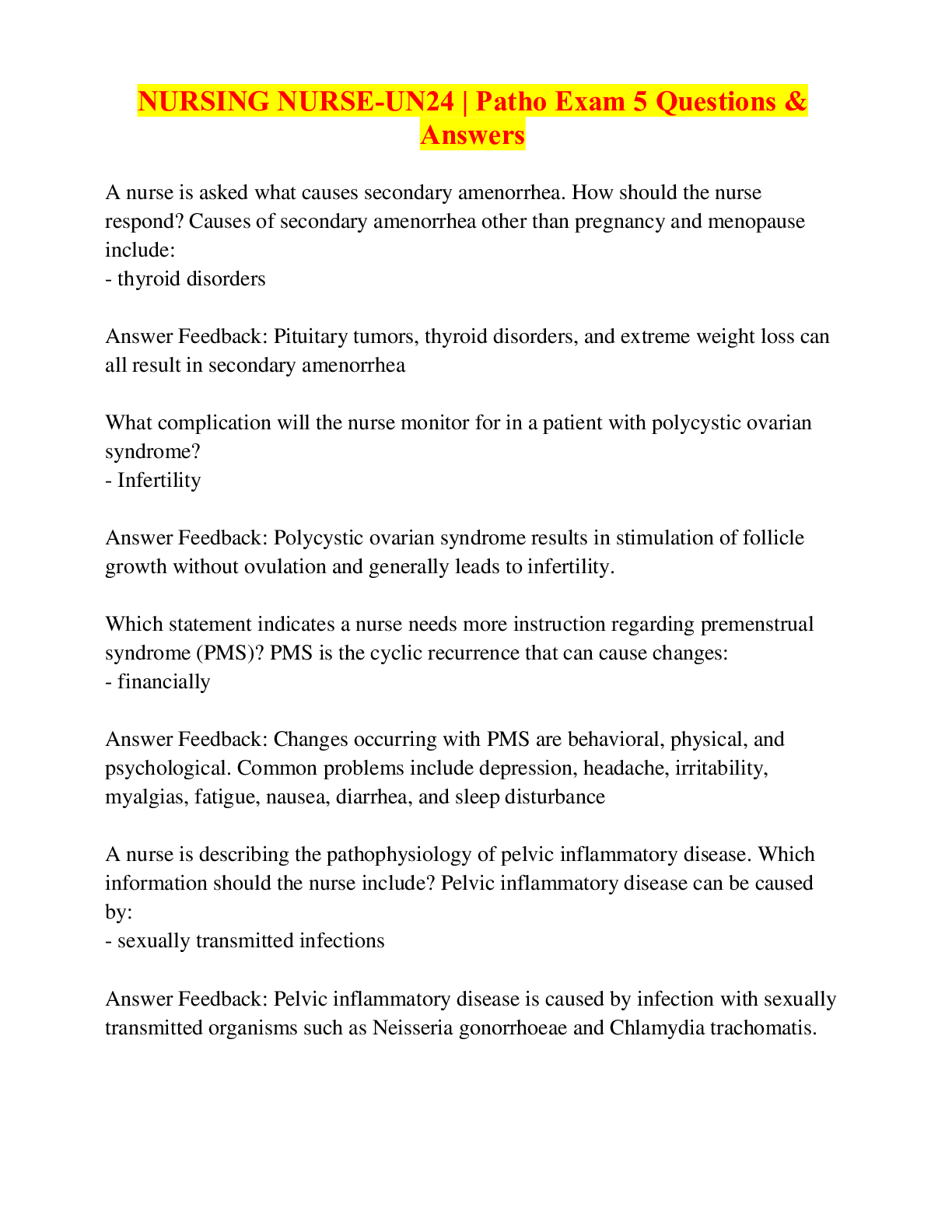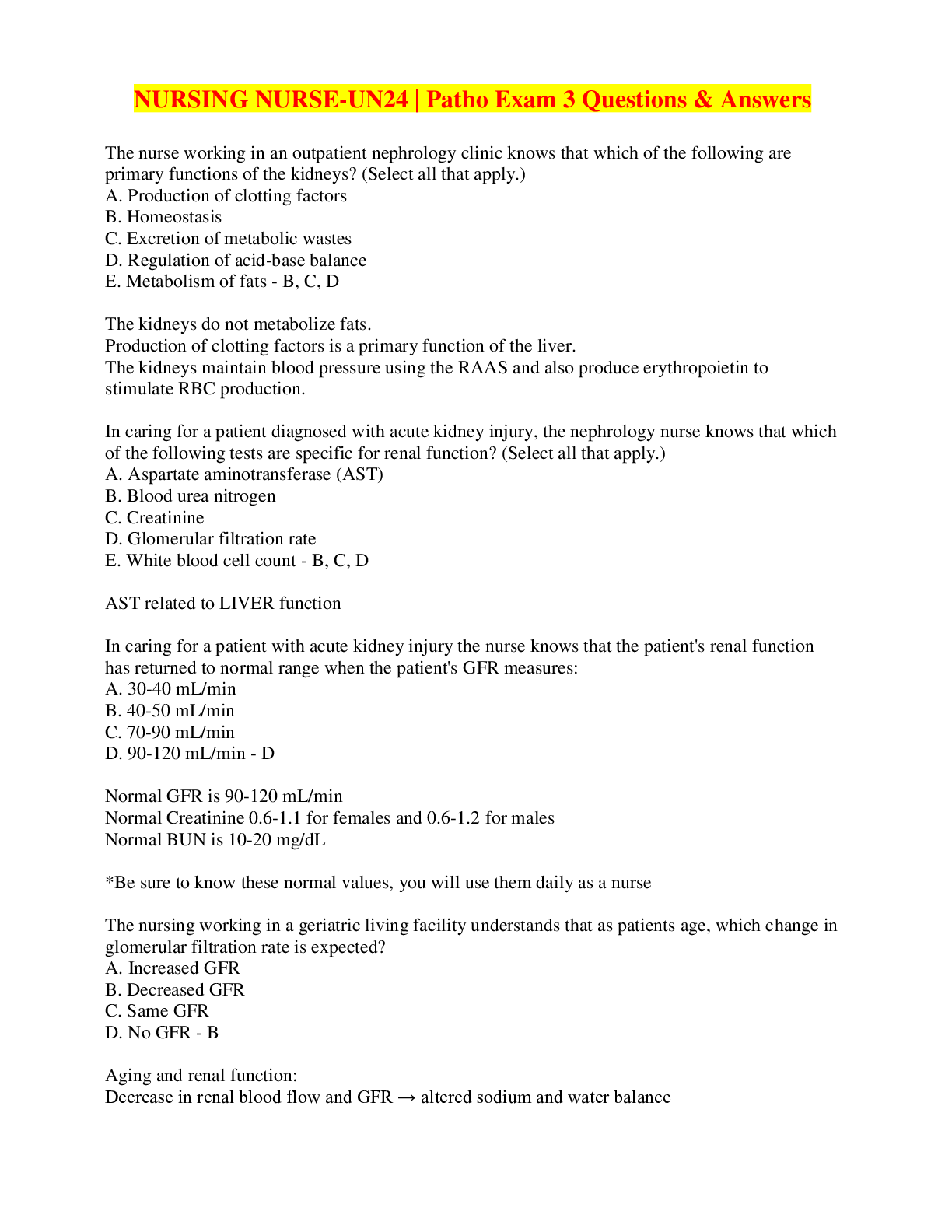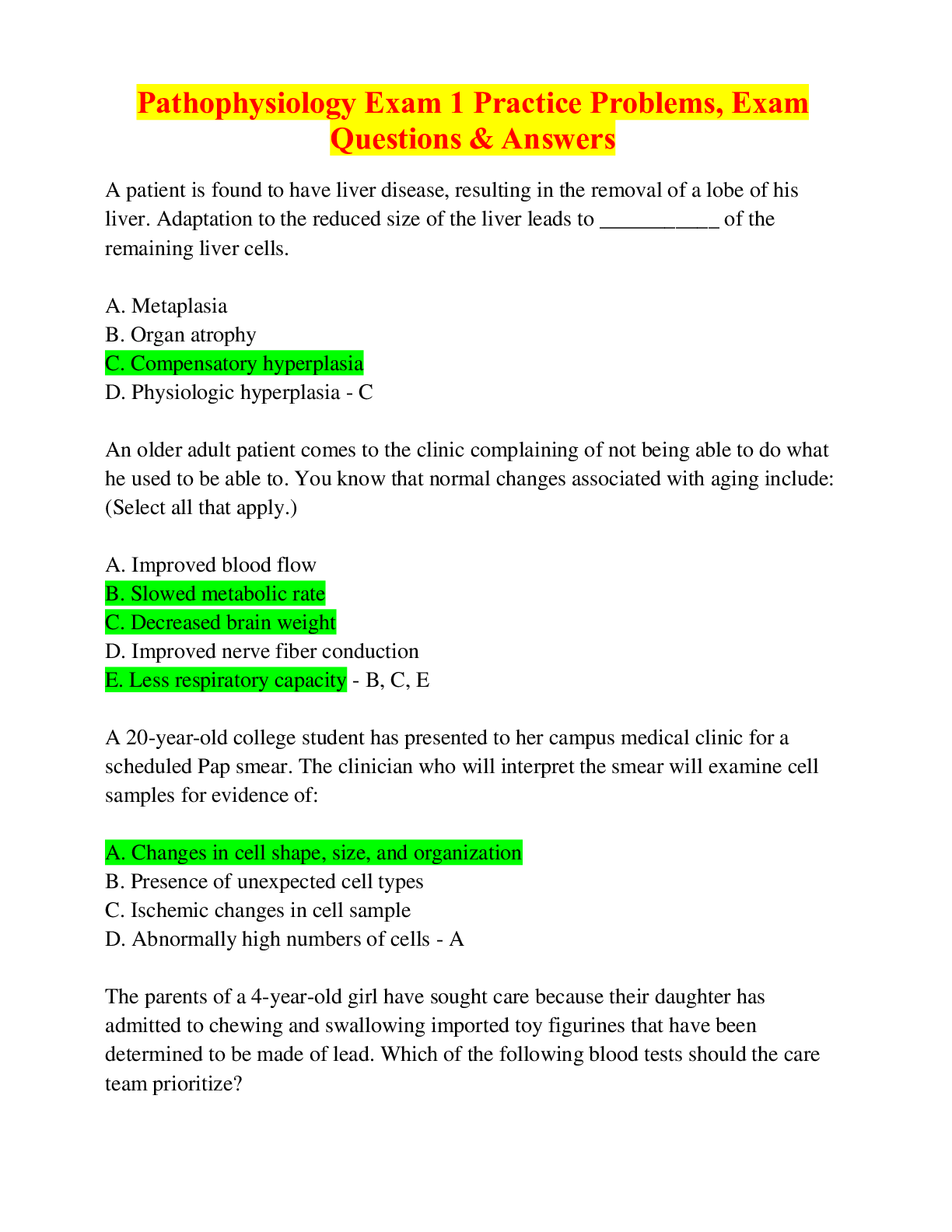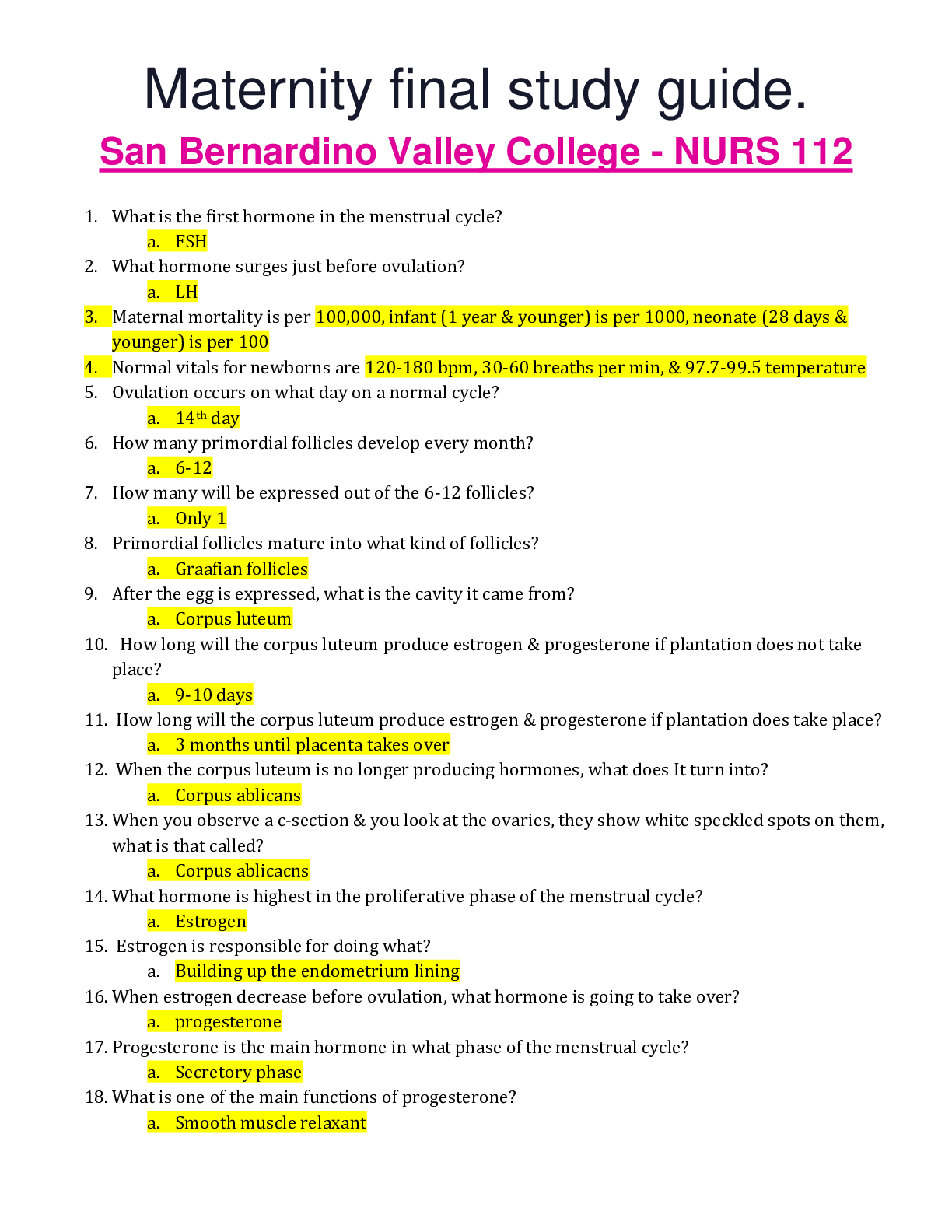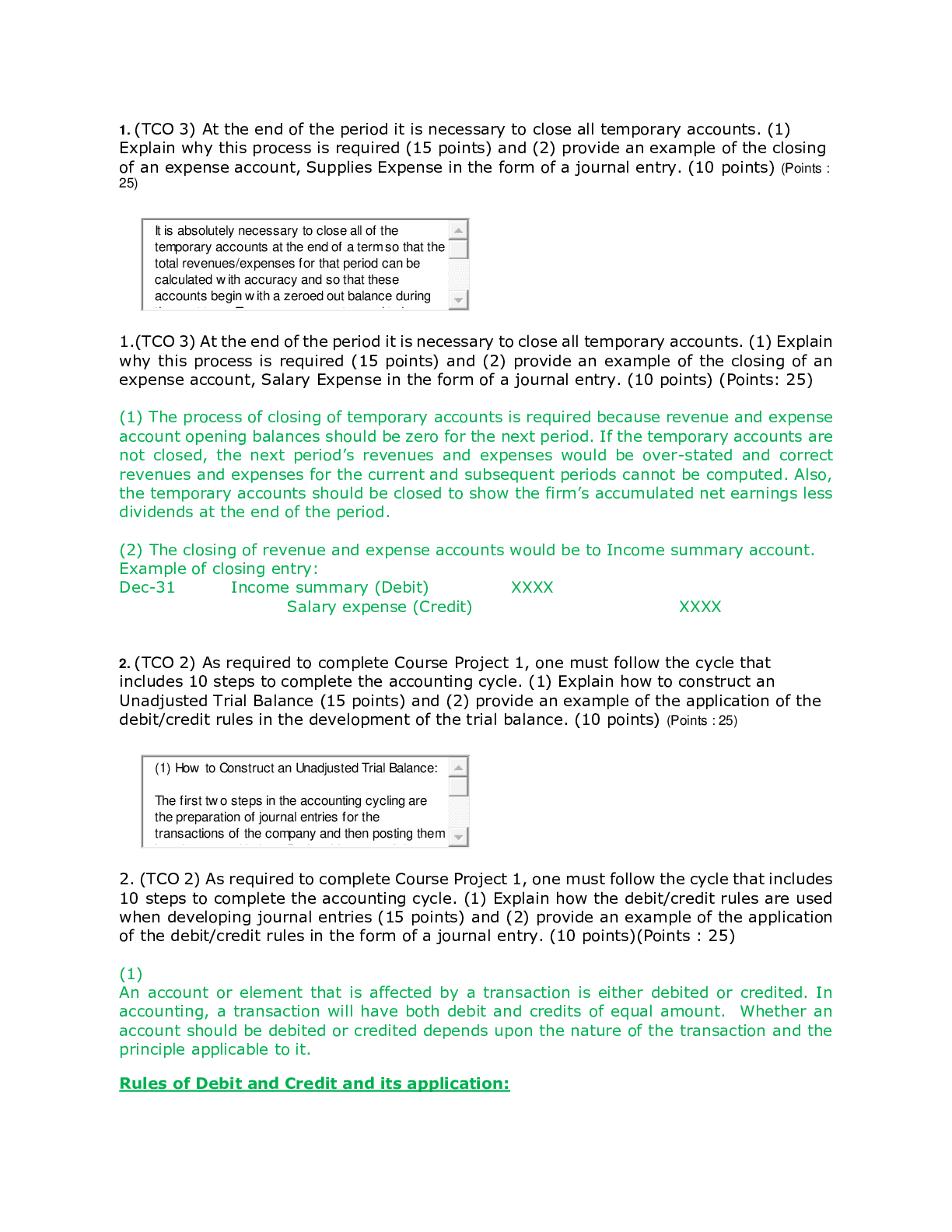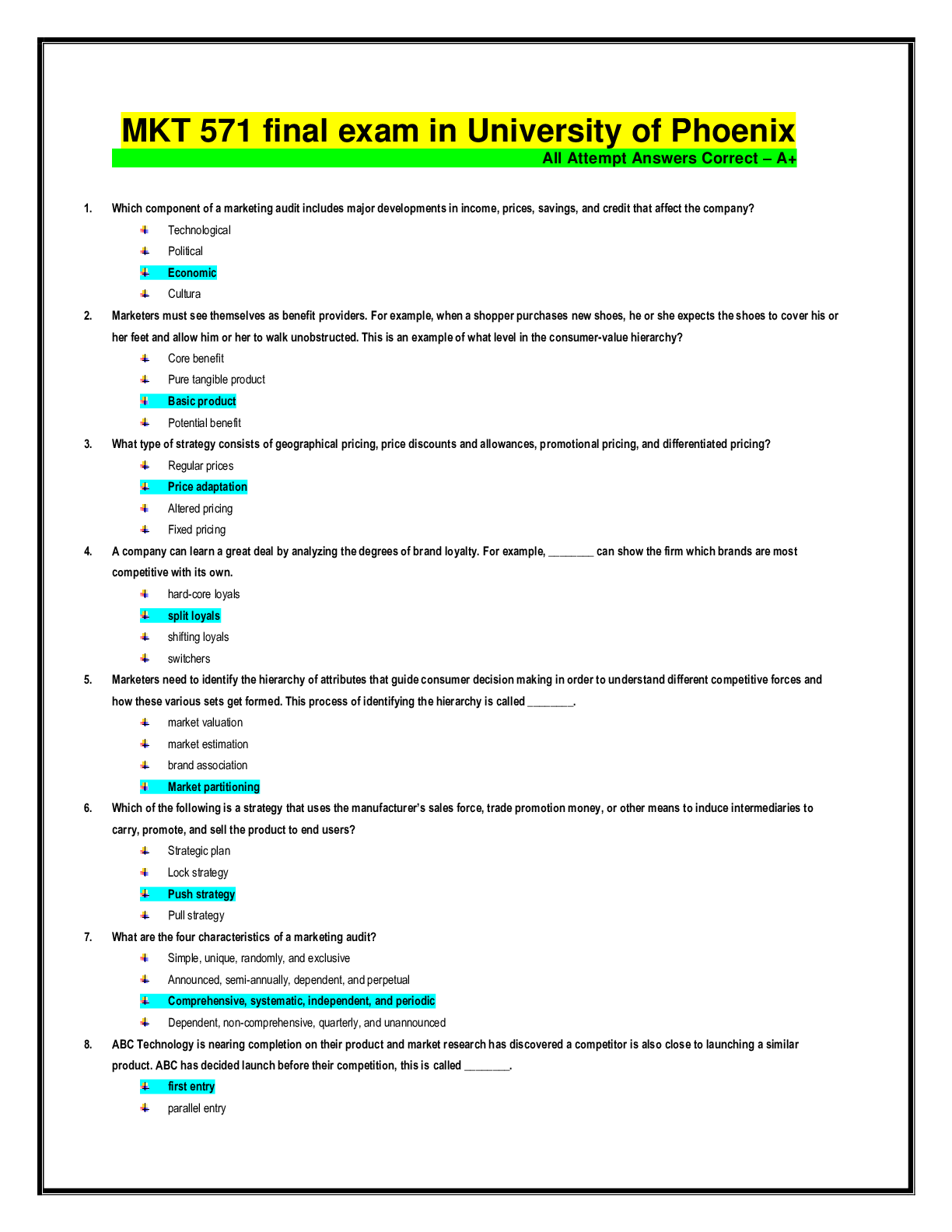PEDS Hesi Next Gen Exam Questions & Answers
Document Content and Description Below
PEDS Hesi Next Gen Exam Questions & Answers-The nurse would suggest genetic counseling for each of the following except: (A) Sickle cell anemia (B) B-thalassemia (C) Hemophilia A (D) Henoch-Sch... onlein purpura - (D) This is an inflammation of the small blood vessels of the skin, joints, bowels, and kidneys and is common in children. However, it is not genetic A child with nephrotic syndrome is receiving corticosteroids. Which of the following statements by the parent would cause the nurse to reinforce the instructions? (A) "My child's blood pressure is good because of the steroids" (B) "Steroids reduce inflammation" (C) "Steroids are making my child's urine have solid particles" (D) "Steroids prevent my child from getting an infection" (E) "Steroids make the kidneys work better" - A, C, D The desired effect of corticosteroids in treating a child with nephrotic syndrome is to reduce inflammation and cause fluid to be removed from the body. It may increase blood pressure or make the child more prone to infections, but it is not a desired outcome. An increase of protein in the urine would suggest that the child is worse and not improving from treatment A nurse on the neurology unit is monitoring an 8-year-old child admitted with seizures. The child experiences a prolonged tonic-clonic seizure. - The nurse should first ensure proper oxygenation insert an airway into the client's mouth administer intravenous (IV) or intramuscular (IM) benzodiazepine A school nurse is called to the school cafeteria after a 13-year-old child is reported to have sudden difficulty breathing. The child has a history of asthma and allergies to peanuts. The focused nursing assessment reveals difficulty breathing, inspiratory and expiratory wheezing, swelling of lips, and a rash on the face. The child reports feeling nauseated, having chest tightness, and feeling faint. - The nurse should first address the child's wheezing and swelling of lips Assessment findings, finding indicates folliculitis. - erythema Assessment findings, finding indicates impetigo. - erythema and lymphedema Assessment findings, finding indicates cellulitis. - erythema, pain, swelling, lymphedema and fever A 15-year-old female adolescent visits the school nurse. The client appears anxious and states they have been dating a couple of different friends. The client states that they went to a party the other night and does not remember the entire night. The client states "I woke up and some of my clothes were missing. Now I have been experiencing some pain when I pee and there is yellow, green drainage that smells awful." - The nurse suspects the client has a sexually transmitted infection as evidenced by yellow, green odorous drainage A nurse on a pediatric unit finds a 3-year-old child unconscious. The child does not respond to stimuli. The nurse calls a code and starts to perform cardiopulmonary resuscitation (CPR). - The nurse should first address the child's airway followed by the child's breathing, then perfusion A nurse in a pediatrician's office is educating a parent of a 2-month-old infant about developmental milestones. - The parent requires further education when the parent states"My infant should be able to sit on their own by 3 months.", "I will be able to play games like peek-a-boo with my infant when they are 4 months old.", and "At 6 months, my baby should be able to feed themselves." A nurse working in the emergency department (ED) is caring for a newborn brought to the ED for increased respiratory rate and subcostal retractions. The nurse performs an assessment on the newborn. Findings include: awake, alert, periods of irritability, subcostal retractions that increase when crying, cardiac murmur auscultated. Vital signs: temperature 97.8°F (36.5°C); heart rate, 180 beats/min; blood pressures: left arm, 68/43 mm Hg; right arm, 67/40 mm Hg; left leg, 73/38 mm Hg; right leg, 75/40 mm Hg; respiratory rate, 62 breaths/min; oxygen saturation, 93% on room air. - The nurse suspects the client is exhibiting signs of ventricular septal defect (VSD) as evidenced by blood pressure and decreased oxygen saturation The parent of a newborn diagnosed with Turner syndrome asks the nurse about the treatment that will be required for their newborn. - The nurse should educate the parents on the primary treatments used in the treatment of Turner syndrome, which includes growth hormone and estrogen therapy A 9-month-old child is seen in the well clinic. Which of the following behaviors would the nurse expect to see? (A) Plays peek-a-boo (B) Walks independently (C) Feeds self with a spoon (D) Stacks 2 blocks together (E) Transfers objects from hand to hand - A, E -walks independently at 15 months -feeds self with spoon at 18 months -stacks 2 blocks together at 18 months [Show More]
Last updated: 7 months ago
Preview 5 out of 23 pages

Loading document previews ...
Buy this document to get the full access instantly
Instant Download Access after purchase
Buy NowInstant download
We Accept:

Reviews( 0 )
$14.50
Can't find what you want? Try our AI powered Search
Document information
Connected school, study & course
About the document
Uploaded On
Dec 16, 2024
Number of pages
23
Written in
Additional information
This document has been written for:
Uploaded
Dec 16, 2024
Downloads
0
Views
14

